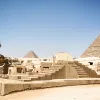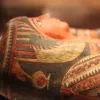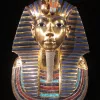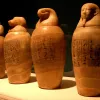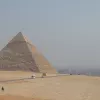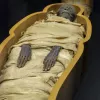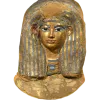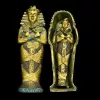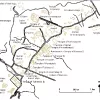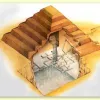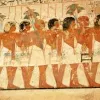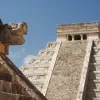Important update from TheSchoolRun
For the past 13 years, TheSchoolRun has been run by a small team of mums working from home, dedicated to providing quality educational resources to primary school parents. Unfortunately, rising supplier costs and falling revenue have made it impossible for us to continue operating, and we’ve had to make the difficult decision to close. The good news: We’ve arranged for another educational provider to take over many of our resources. These will be hosted on a new portal, where the content will be updated and expanded to support your child’s learning.
What this means for subscribers:
- Your subscription is still active, and for now, you can keep using the website as normal — just log in with your usual details to access all our articles and resources*.
- In a few months, all resources will move to the new portal. You’ll continue to have access there until your subscription ends. We’ll send you full details nearer the time.
- As a thank you for your support, we’ll also be sending you 16 primary school eBooks (worth £108.84) to download and keep.
A few changes to be aware of:
- The Learning Journey weekly email has ended, but your child’s plan will still be updated on your dashboard each Monday. Just log in to see the recommended worksheets.
- The 11+ weekly emails have now ended. We sent you all the remaining emails in the series at the end of March — please check your inbox (and spam folder) if you haven’t seen them. You can also follow the full programme here: 11+ Learning Journey.
If you have any questions, please contact us at [email protected]. Thank you for being part of our journey it’s been a privilege to support your family’s learning.
*If you need to reset your password, it will still work as usual. Please check your spam folder if the reset email doesn’t appear in your inbox.
Pyramids and mummies
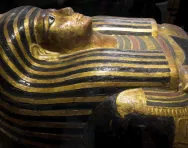
What are pyramids and mummies?
When people in Ancient Egypt died, they were mummified – this was a long process of preserving the body, and designing a coffin with painted pictures and writing. When the pharaohs (kings and queens) of Egypt died, they were mummified and buried in large stone pyramids. We can still see these pyramids today.
The process of mummifying and burying a body was done to help the person travel successfully through the underworld, which would get them to the afterlife and the god Osiris, who was king of the underworld.
Top 10 facts
- When people died, they were mummified – this process took a long time, but it prepared them for the afterlife.
- The Egyptians believed that there were many gods who oversaw different parts of life on earth and life after death. It was important that someone was able to reach the afterlife and the god Osiris, so mummification was taken very seriously.
- During the mummification process, the internal organs were put into containers called canopic jars.
- The pharaohs – the kings and queens of Egypt – were thought to be gods themselves. Some were buried in elaborate tombs called pyramids, though some were buried in underground tombs in the Valley of the Kings.
- The pyramids at Giza are the biggest that we can see today, but we have found around 80 pyramids from Ancient Egypt.
- Pyramids took a long time to build, so work would start on them while the pharaoh was still alive.
- The Egyptians used their knowledge of maths to build pyramids that were shaped well and positioned properly.
- Inside pyramids, there were different chambers that held things the king would need in the afterlife.
- Pyramids also included shafts that pointed upwards, so the pharaoh’s ‘ba’ (soul) could escape.
- We have learned about how mummies were made, and what Egyptians believed about the afterlife, thanks to discoveries by archaeologists.
Timeline
- c2600 BCPyramids started to be built
- c2550 BCThe Great pyramid of Giza was built

- 2555-2450 BCThe pyramids in Giza were built, as well as the sphinx
- 1539-1069 BCMummies of pharaohs were buried in the Valley of the Kings

- 1473-1458 BCQueen Hatshepsut ruled
- 1332-1323 BCKing Tutankhamen ruled
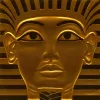
- 1279-1213 BCKing Rameses II ruled
- 51-30 BCCleopatra VII ruled; she was the last pharaoh
- 1799 ADThe Rosetta stone was found
- 1922 ADKing Tutankhamen’s tomb was discovered


Boost Your Child's Learning Today!
- Start your child on a tailored learning programme
- Get weekly English & maths resources sent direct to your inbox
- Keep your child's learning on track
Did you know?
- Kings and queens in Egypt were called pharaohs. Egyptians believed that pharaohs were gods, and that Horus – the god of the sky (who had a falcon’s head) – gave them power.
- When pharaohs died, they would be buried in decorated tombs. These tombs would sometimes be inside a pyramid, which has four faces shaped like triangles.
- The largest pyramid in Egypt is the Great Pyramid of Giza, which today is 138.8 metres tall. It might have taken more than 20 years to build! It was a tomb for King Khufu.
- Sometimes pharaohs weren’t buried in pyramids. This happened with King Tutankhamen (also called King Tut, for short), who died when he was very young. There wasn’t time to build him a pyramid, so they made a tomb for him in the Valley of the Kings.
- Tombs would be covered by a decorated stone called a stela – it had information about the person buried inside.
- Some Egyptian gods had animal heads, which would have something to do with the certain kind of power that the god had. For instance, the god Khnum had the head of a ram, because he was a mighty fighter. Horus, who had a falcon’s head, was the god of the sky.
- The Egyptians invented mummification, which is a process of preserving a body. There was a lot involved in mummifying, and it was all very important because people believed it helped them get to the afterlife. It was also expensive, so only people who could afford it were mummified.
- Making a mummy could take 70 days – that’s over two months!
- Not just humans were mummified – archeologists have found mummies of animals such as cats, dogs and even bulls and crocodiles. This was done to please the gods.
- The Great Sphinx is a huge stone sculpture near the pyramids in Giza. It has the head of a person with the body of a lion. Archaeologists aren’t sure when it was made, or even why it was made, so the Great Sphinx is a great mystery to us today.
Look at the images in the gallery and see if you can spot the following:
- Pyramids and the Sphinx
- A mummy
- Pharaoh Tutankhamun's gold mask
- Canopic jars
- The pyramids at Giza
- An illustration of the embalming process
- A mummy in the Vatican Museum
- The head of a Pharaoh's Sarcophagus
- A mummy and a sarcophagus
- A map showing the Valley of the Kings and temples to different gods
- The inside of a step pyramid
Gallery
About
Pyramids had different looks as the style developed over the centuries. They started as step pyramids, which looked like a staircase with different levels. When Snefru was pharaoh, builders tried to get a smoother shape and made a pyramid that started out at one angle then sloped to another angle at the top, looking a bit bent – this is called the Bent Pyramid. Snefru had another pyramid built that did have smooth, perfectly angled sides – this is called the Red Pyramid. The Great Pyramids were built like that one.
The Egyptians believed in many different gods that oversaw different parts of life. The also believed that when people died, they would enter the afterlife. This involved travelling through the underworld to get to Osiris, who was the king of the underworld.
Because of this, they thought the body should be in as good condition as possible – they believed that the soul still needed the body in the afterlife. They realised that bodies buried without any covering in the dry, salty sand were better preserved than those buried in closed coffins. From there, they began to dry out the body before it was buried by using a type of salt called natron.
To prepare for the drying stage, the brain would be removed by inserting a hook in the nose, and organs would be taken out of the body and placed in jars. These were called canopic jars, and each one had a different top and a special purpose:
- The jar for the intestines had a falcon head, and was called Qebehsenuf.
- The jar for the stomach had the head of a desert dog, and was called Duamutef.
- The jar for the liver had the head of an ape, and was called Hapy.
- The jar for the lungs had a human head, and was called Imsety.
It took 40 days to dry out the body using natron. Then, it would be wrapped in lots and lots of linen strips, using resin to hold the strips in place. Sometimes a mummy mask would be placed on the head, over the linen wrappings, and then the mummy would be put inside a wooden coffin, and maybe even a stone one as well (an Egyptian coffin is also called a sarcophagus).
The coffin was painted in bright colours, with hieroglyphics on it that were meant to help the person in the afterlife. The underworld could be a dangerous place, with many obstacles that would stop you from reaching Osiris. Because of this, people were buried with specially written spells to help them combat some of these things. Mummies also had amulets – good luck charms – to protect them on their journey.
Mummies were buried with scrolls called the Book of the Dead, which explained how to go through the underworld and what spells and chants to use. The Book of the Dead was sometimes written on tomb walls too, and some scrolls had pictures. Scribes would write copies of the Book of the Dead on papyrus.
The Egyptians believed that you’d need food, money, tools and even slaves in the afterlife, so many treasures and sculptures were left in tombs. Tomb robbing was common, so sometimes pyramids would be built with false entrances to keep the real entrance hidden.
Famous pharaohs:
Queen Hatshepsut – She was one of the first female pharaohs, and very successful. She expanded Egypt’s trade network, and had many different buildings constructed.
King Khufu – He had the Great Pyramid at Giza built.
King Tutankhamen – He wasn’t pharaoh for very long, and died when he was only 18. He has been one of the most well-known pharaohs since his tomb was discovered in 1922 in the Valley of the Kings.
King Rameses II – He was a very successful pharaoh; Rameses helped Egypt prosper, and ruled for a long time.
Queen Cleopatra VII – She was the last pharaoh, and known for being very beautiful and very smart. She had a child with Julius Caesar and killed herself when she knew the Romans were going to conquer Egypt in 30 BC.
Related Videos
Just for fun...
- Spell your name with hieroglyphics!
- Make your own paper models of the Great Pyramid of Khufu and the Sphinx
- Print this out and design your own sarcophagus
- Build your own pyramid in this interactive game
- Prepare a pharoah for his tomb with some digital mummy-making
- Read a National Geographic Kids comic set in the land of the Phaoroahs
- Play Find the Pharaoh's Fragment game and solve an Egyptian mystery
- Watch a Horrible Histories song about Cleopatra, Crafty Cleopatra
See for yourself
- See actual mummies at the British Museum
- Explore the Giza Pyramids near Cairo on your computer
- Look at some Ancient Egyptian temples rebuilt in 3D
- See some of Ancient Egypt’s most remarkably preserved mummies
- Images of a mummified cat
Best children's books about pyramids and Egyptian mummies
Find out more:
- Download British Museum resources about Egyptian mummies, how mummies were made and the development of mummification
- An archaeologist at the American Museum of Natural History answers kids' questions about mummies in video interviews
- Read a BBC Bitesize step-by-step guide to making a mummy
- The DKfindout! children's guide to pyramids and mummies
- Watch BBC video clips about how the pyramids were constructed
- Read the story of how Howard Carter found King Tut’s tomb
- Look through an image gallery of the treasures of Tutankhamun
- Find out about animal mummies and look inside an animal mummy
- Information about how Imhotep, the royal architect of the Pharaoh Djoser, built the first step pyramid in about 2700 BCE, in PBS videos
- Read about canopic jars and how they were used
